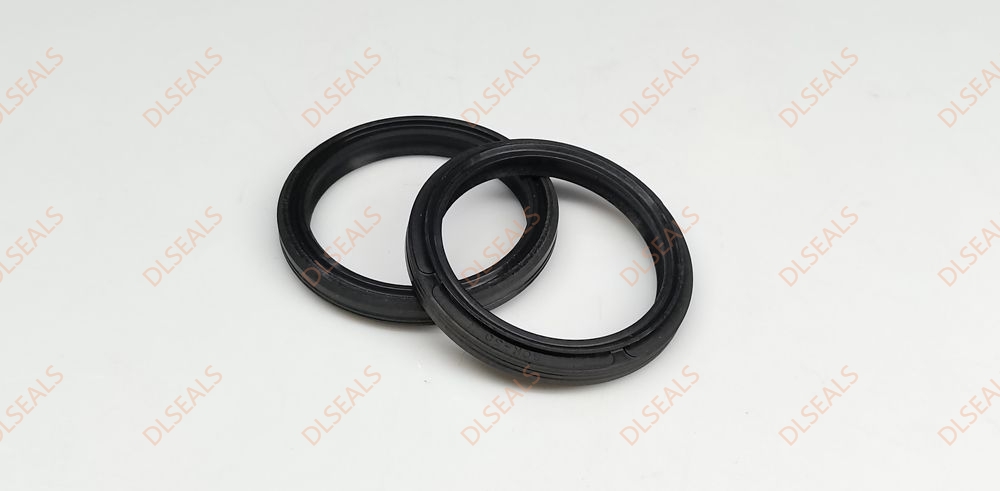
Seals play a vital role in all kinds of industrial equipment and systems. Their function is to ensure that liquids, gases or solid substances do not leak, thereby ensuring the stable operation and extended service life of the equipment. However, in actual use, seals may encounter some common problems that may affect their performance and reliability. This article will analyze these common problems and their causes in detail, and provide optimization countermeasures to help you better maintain and manage seals.
1. Common problems and their causes
Leakage problems
Causes:
Improper installation: Seals may leak due to misoperation or damage during installation.
Material mismatch: Seal materials may be incompatible with the working medium or environment, resulting in seal failure.
Aging or wear: After long-term use, seals may leak due to wear or aging.
Optimization countermeasures:
Follow the manufacturer’s installation guide to ensure that the seal is installed correctly and use appropriate tools.
Select appropriate sealing materials according to the properties of the medium and environmental conditions.
Check the seal status regularly and replace aged or worn seals in time.
Excessive wear
Causes:
Media erosion: Contact with corrosive or high-temperature media may cause increased wear of seals.
Harsh operating conditions: High pressure, high temperature or frequent mechanical movement may accelerate the wear of seals.
Installation problems: Improper installation may cause excessive friction or extrusion of seals.
Optimization countermeasures:
Choose materials that can resist media erosion and high temperature, such as corrosion-resistant alloys or high-temperature rubber.
Optimize operating conditions to minimize impact and high loads on seals.
Ensure that seals are installed flat to avoid excessive friction or extrusion.
Seal failure
Reason:
Design defects: The seal design does not meet the actual working conditions, resulting in poor sealing effect.
Overcompression: Excessive pressure on the seal may cause deformation or damage.
Material defects: Unqualified or unsuitable materials are used.
Optimization countermeasures:
Fully consider the actual working conditions during the design stage and choose a suitable seal design.
Avoid excessive compression and follow the manufacturer’s compression recommendations.
Choose high-quality, standard-compliant sealing materials.
Temperature adaptation issues
Reason:
Extreme temperatures: Seals may not maintain performance at too high or too low temperatures.
Temperature changes: Frequent temperature fluctuations may cause seals to expand and contract, affecting the sealing effect.
Optimization countermeasures:
Choose sealing materials that are resistant to high or low temperatures to ensure that they adapt to the working environment.
Choose a sealing design with good temperature adaptability to reduce the impact of temperature changes on the seal.
Chemical corrosion
Reason:
Chemical properties of the medium: The seal may come into contact with corrosive or reactive media, causing corrosion.
Environmental pollution: Chemical substances in the external environment may cause corrosion to the seal.
Optimization countermeasures:
Choose sealing materials with good corrosion resistance, such as fluororubber or chloroprene rubber.
Protect the surface of the seal to reduce direct contact with chemicals.
Compression memory problem
Reason:
Material properties: Some sealing materials may not be able to return to their original state after long-term compression, resulting in reduced sealing performance.
Improper use: The seal is in a compressed state for a long time, which may cause compression memory phenomenon.
Optimization countermeasures:
Choose sealing materials with good compression recovery performance.
Avoid using seals in a compressed state for a long time, check regularly and make necessary replacements.
2. Summary
Seals are crucial in equipment and systems, but they may encounter a variety of problems in actual use. By analyzing these common problems and gaining a deeper understanding of their causes, combined with reasonable optimization strategies, the performance and service life of seals can be effectively improved. Regular maintenance, correct material selection, and accurate installation are all key to ensuring the proper operation of seals. I hope the guidelines provided in this article can help you better solve seal problems and ensure the stability and reliability of your equipment.
Post time: Aug-02-2024
